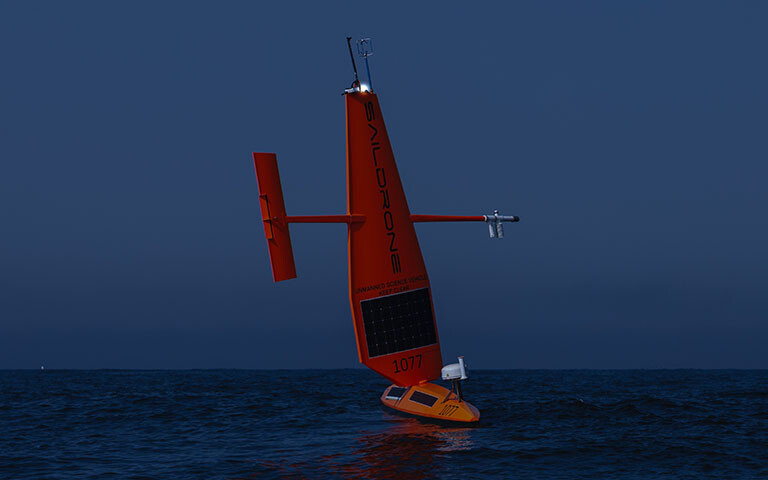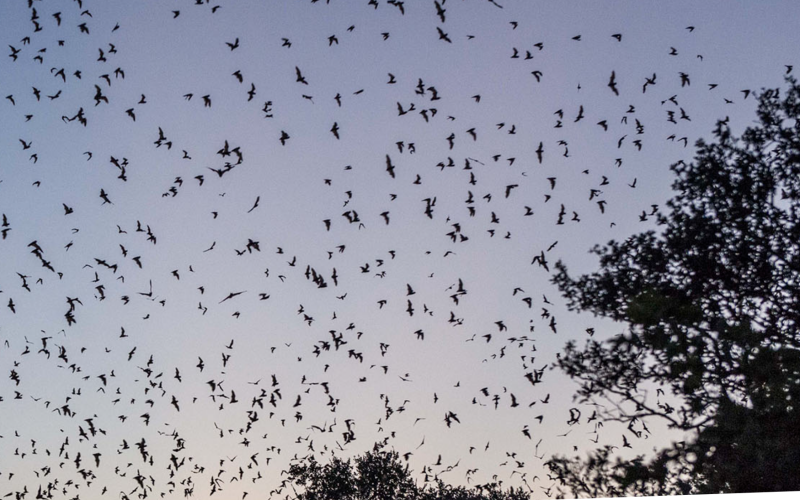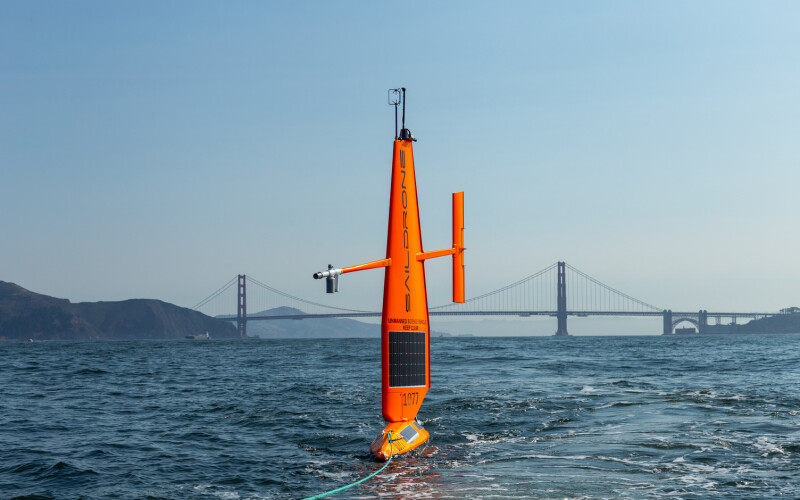A novel mission tracking bats and how they might be affected by offshore wind energy projects was completed October 2 by Saildrone with one of its uncrewed surface vehicles (USVs) and the non-profit Bat Conservation International.
“Saildrone and Bat Conservation International (BCI), a global conservation organization dedicated to ending bat extinctions, have completed a first-of-its-kind mission to study bats in an offshore environment using the bats’ own echolocation calls,” according to an Oct. 25 account of the mission by Saildrone.
Like shorebird and seabird populations, bats are potentially affected by offshore wind power development. Bats and their crucial role in the ecosystem are underappreciated, according to Bat Conservation International.
“There are more than 1,400 species of bats, and bats make up about 25% of all mammals. In North America, bats contribute about $23 billion in pest control services to the agricultural industry,” according to BCI. “Around the world, bats are crucial for pollination and seed dispersal and consume insects that transmit diseases.”
Saildrone, based in Alameda, Calif., and BCI equipped a 23’ Saildrone Explorer USV with an ultrasonic microphone, mounted at the top of the sail wing, in addition to the standard Saildrone sensor suite. The drone spent 31 nights sampling near a known offshore bat migratory roost on South Farallon Island, approximately 25 nautical miles west of San Francisco’s Golden Gate Bridge.

The operational capabilities and endurance of Saildrone vehicles make them ideal platforms for offshore studies, said Michael Whitby, BCI’s director of Bats & Wind Energy Program.
“With a zero operational carbon footprint, no impact to the marine ecosystem, a diverse payload, and the ability to stay at sea for extended lengths of time, Saildrone is ideally suited to provide never-before-collected information about offshore bat migration patterns,” said Whitby. “This important information will allow us to understand and minimize the potential impacts of offshore wind energy development on bat populations.”
The mission is funded by the U.S. Department of Energy in collaboration with EPRI, an independent, nonprofit energy research and development organization. Their goal is to help demonstrate the viability of the Saildrone platform as a tool for bat research and environmental impact assessments to evaluate the risk of offshore wind energy development to bats.
“The need to monitor bats in the offshore environment is increasing,” said Christian Newman, technical executive for environmental aspects of renewables, at EPRI. “EPRI’s expertise and focus on collaboration supports the project team well, helping test a new type of technology that can help fill in data gaps for offshore wind decision-makers.”
U.S. Geological Survey researchers, who partnered with BCI on this project, have been studying bats along the West Coast in the coastal and offshore environments. Shoreside monitoring sites are typically deployed on coastal rock formations and islands, which are difficult to reach and maintain. They are focusing on migratory bat species like the hoary bat, the silver-haired bat, the western red bat, and the Mexican free-tailed bat.
Hoary bats have been known to fly from the U.S. mainland to Hawaii in about three days, at an average speed of 60 mph. Flying at speeds up to 100 mph, the Mexican free-tailed bat is the fastest bat in the world.

During the mission from Sept. 2 to Oct. 2, Saildrone recorded over two hours of bat activity – 965 bat calls across five known species, including 276 hoary bats and 209 Mexican free-tailed bats.
Saildrones are deployed from any dock and transit autonomously to and from the area of operation. Powered by wind for propulsion and solar energy for onboard sensors, they are virtually silent and have a zero operational carbon footprint.
“Saildrone’s quiet platform has long been valued for underwater acoustic research, and we are thrilled to leverage it in this new way to help protect the world’s bat populations,” said Cristina Castillo, Saildrone’s senior program manager for ocean data programs.
Saildrone’s underwater acoustic data collection includes surveys of fish biomass for sustainable fisheries management and has previously used sound to track sharks, marine mammals, and crustaceans. The company is currently developing new underwater acoustic technology to detect, classify, and localize marine mammals, especially whales, which are highly sensitive to underwater noise.
“Saildrone’s innovative technology is providing invaluable understanding of bat presence offshore that will help the United States advance offshore wind development in an environmentally responsible manner,” said Joy Page, environmental research manager for the Department of Energy’s Wind Energy Technologies Office.

 Unmanned Aerial Vehicle The latest drone news
Unmanned Aerial Vehicle The latest drone news



